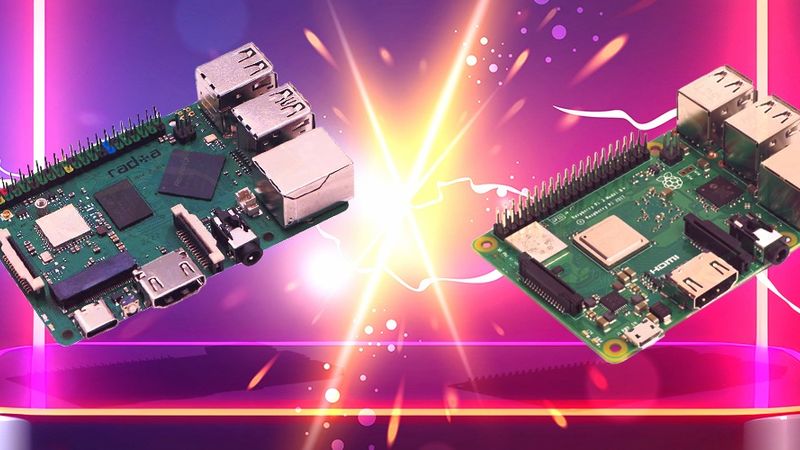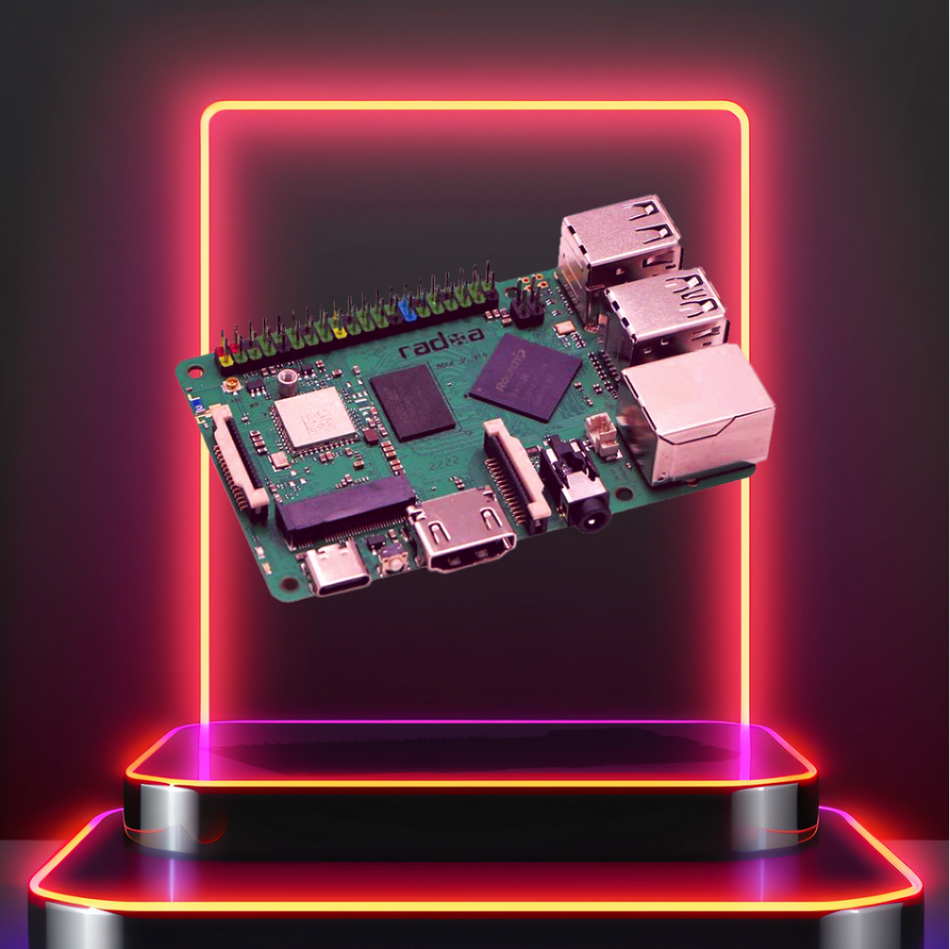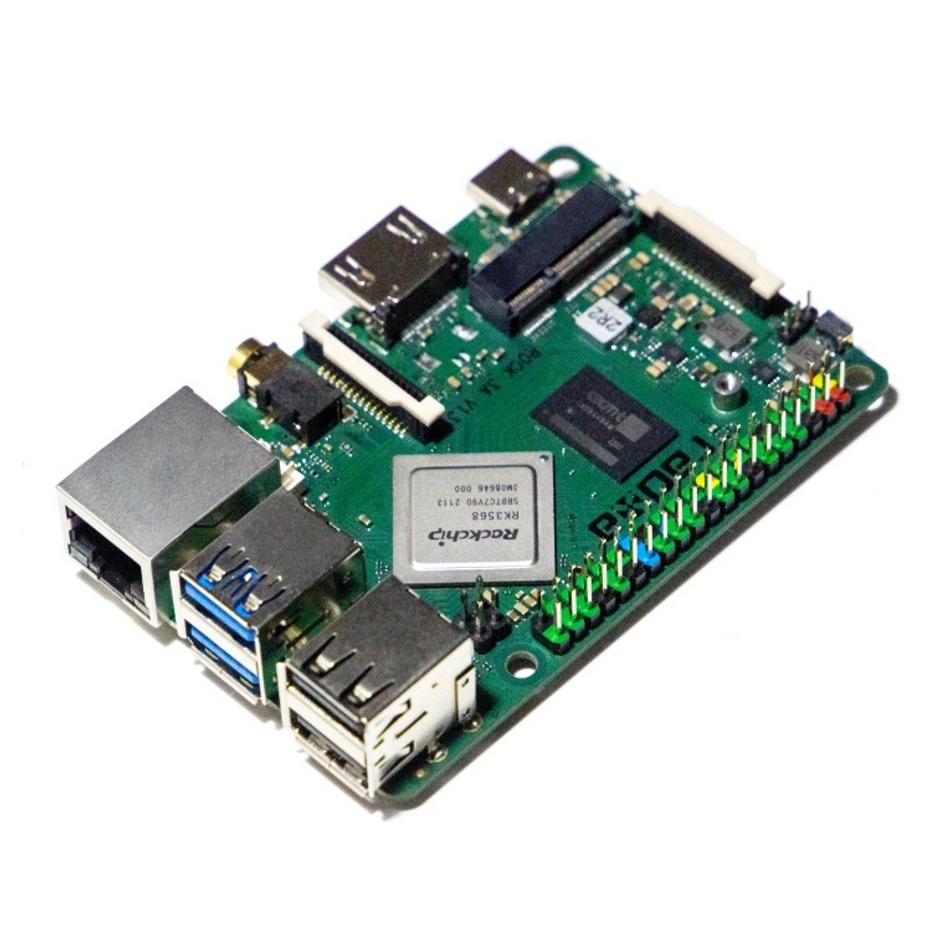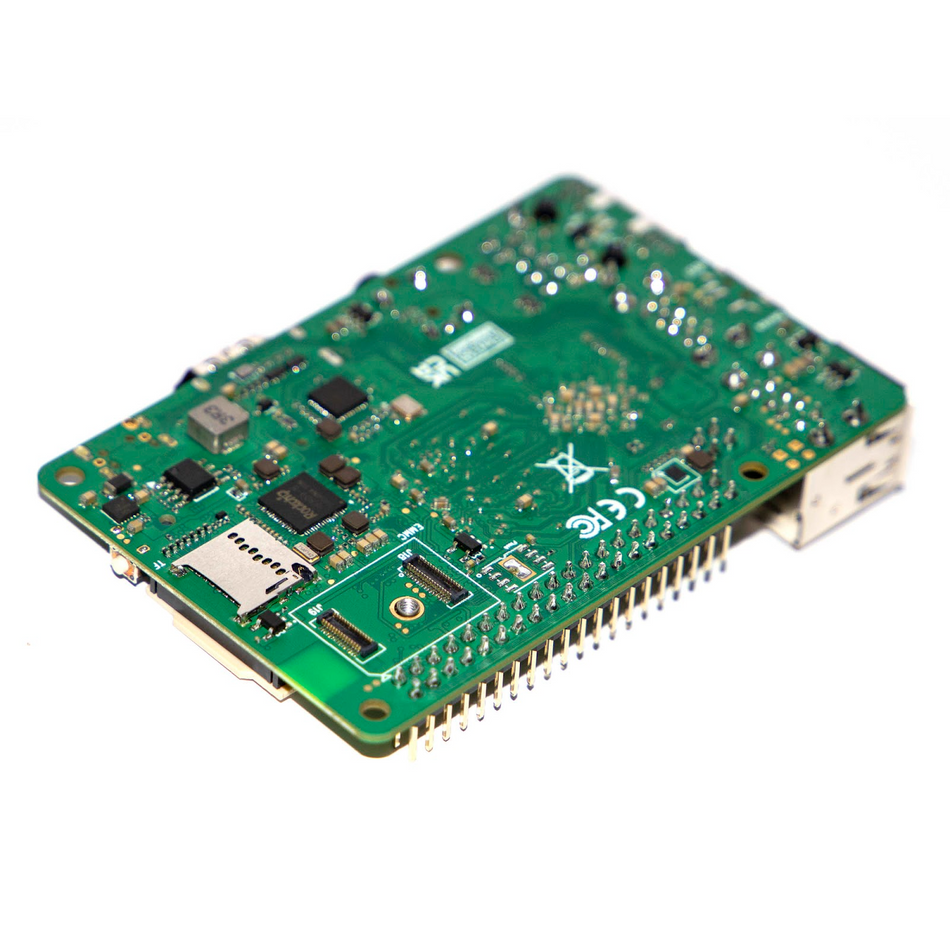ROCK 3 vs. Raspberry Pi 3: A Comparative Analysis
A comparative analysis of the Raspberry Pi 3B+, the ROCK 3 Model A, and the ROCK 3 Model C.
While Raspberry Pi 3 is an industry leader in Single Board Computers, unless you're one of the Raspberry Pi foundations’ existing industrial customers, it can be a significant challenge to acquire a 3B+ at the moment. Fortunately, global tech company OKdo offers two viable alternatives to the Raspberry Pi 3B+ in the form of the ROCK 3 Model A and ROCK 3 Model C boards, both of which adhere to the 3B+ specifications and offer enhanced capabilities. In this article, we will conduct a comparative analysis of these three models.
Key specifications
Here we examine the technical specifications of each board in this comprehensive side-by-side comparison.
| ROCK 3 Model A | ROCK 3 Model C | Raspberry Pi 3 Model B+ |
Availability | Available | Available | Sold Out |
SoC | Rockchip RK3568 | Rockchip RK3566 | Broadcom BCM2837 |
Processor | Quad‑core Arm® Cortex®‑A55 (ARMv8) 64‑bit @ 2.0GHz | Quad‑core Arm® Cortex®‑A55 (ARMv8) 64‑bit @ 1.6GHz | Quad‑core Arm®, Cortex®-A53 (ARMv8) 64-bit @ 1.4GHz |
Clock | 2.0GHz | 1.6GHz | 1.4GHz |
GPU | Arm Mali™ G52-2EE | Arm Mali™ G52-2EE | Broadcom Videocore-IV |
Memory | 2GB LRDDR4 SRAM | 1GB / 2GB LRDDR4 SRAM | 1GB LPDDR2 SDRAM |
Power | USB Type-C™ PD / Qualcomm® Quick Charge™ / GPIO | USB Type-C™ / GPIO | Micro-USB 5V/2.5A |
HDMI | 1x HDMI 4K@60fps | 1x HDMI 1080p@60fps | 1x HDMI 1080p@30fps |
USB | 2x USB2 HOST / 1x USB3 HOST / 1 x USB 3.0 OTG-HOST | 2x USB2 HOST / 1x USB3 HOST / 1x USB2 OTG-HOST | 4 USB 2.0 PORTS |
Audio Ports | 3.5mm jack – stereo output/mic input | 3.5mm jack – stereo output/mic input | 3.5mm jack – stereo output |
Connectivity | M.2 E Key / Gigabit Ethernet | 2.4GHz and 5GHz IEEE 802.11b/g/n/ac Wireless LAN / Bluetooth 5.0 / Gigabit Ethernet | 2.4GHz and 5GHz IEEE 802.11.b/g/n/ac Wireless LAN / Bluetooth 4.2 / Ethernet (300bps) |
MIPI | 1x 2 lane DSI / 1x 2 lane CSI | 1x 2 lane DSI / 1x 2 lane CSI | MIPI DSI / MIPI CSI |
Storage | Micro SD / eMMC / M.2 M Key NVME / SATA | Micro SD / eMMC / M.2 M Key NVME / SATA | Micro SD |
UARTS | 5x UART | 5x UART | 2x UART |
RTC | Yes | No | No |
Power On/Of | Yes | Yes | No |
Software | Debian / Ubuntu / Android 11/ Armbian / etc | Debian / Ubuntu / Android 11/ Armbian / etc | Raspberry Pi OS / Ubuntu / LibreELEC / etc |
Operation Temperature | 0~50 ℃ | 0~50 ℃ | 0~50 ℃ |
Download the full comparison table here.
ROCK 3 Model C
The ROCK 3 Model C shares many similarities with the Raspberry Pi 3 Model B+. However, it distinguishes itself with several notable additional features that outperform the RPI 3B+. In this analysis, we primarily focus on these differentiating aspects.
Both boards feature a 64-bit, quad-core Arm System-on-Chip (SoC). While the Raspberry Pi 3 Model B+ incorporates the Cortex A-53 mid-range processor, the ROCK 3C has the low-power Cortex A55 cores.
When subjecting both boards to the same benchmark test, such as Sysbench to fully utilize all four cores for computation, the results are nearly identical. However, the ROCK 3C consumes nearly half the power and maintains lower operating temperatures, offering significant advantages for eco-conscious applications.
ROCK 3C – high-quality graphics processing
For those seeking superior graphics processing capabilities, the ROCK 3C provides HDMI 1080p@60fps, in contrast to the 1080p@30fps of the RPI 3B+. This difference in video output quality is attributed to the ROCK 3C's Mali GPU, which offers broader support for graphics rendering APIs. Furthermore, the 2GB RAM configuration of the ROCK 3C enhances performance, surpassing the 1MB RAM limitation of the RPI 3B+.
Both boards have the same Wireless LAN capabilities. The difference comes when using Bluetooth. The ROCK 3C complies with Bluetooth v5.0, which can give a significantly higher range, broadcast capability and throughput than the v4.2 supported by the RPI 3B+.
More connectivity and storage options
In terms of wired connectivity, the ROCK 3C has true Gigabit Ethernet, while the Raspberry Pi 3 Model B+ is constrained to 300bps due to bandwidth sharing with the USB bus. Both boards support Power over Ethernet (PoE).
A significant advancement with the ROCK 3C is its mitigation of the Raspberry Pi 3 Model B+'s reliance on SD card media for storing the operating system and data. The 3C offers the option to utilize dedicated eMMC memory, delivering slightly improved performance and significantly enhanced reliability and security. The eMMC connector is located on the underside of the board, and modules are available in capacities ranging from 16GB to 128GB.
While the Raspberry Pi 3 Model B+ accommodates USB to SSD as a storage solution, it is constrained by its 4 x USB 2.0 ports, which impact throughput and share bandwidth with Ethernet. In contrast, the ROCK 3C offers 1 x USB 3.0 and 3 x USB 2.0 ports, with one configured as OTG.
For those seeking high-performance, large capacity data storage, the ROCK 3C has an M.2 M‑Key 2230 connector with single lane, PCIe 2.1 and SATA 3.0 combined interfaces. The M.2 slot can be configured either to support NVMe or SATA SSD devices, though an additional adapter board is required for SATA support.
Additional features include a 2-pin fan header equipped with PWM (Pulse Width Modulation) capability, as well as an on/off push-button for safe system power management. The device also includes a microphone input integrated into the audio jack.
Physically, the ROCK 3C shares the same dimensions and mounting hole geometry as the RPI 3B+, with the exception of the USB-C power connector, so it fits existing RPI 3B+ cases by widening the power connector aperture.
ROCK 3 Model A
Now we will examine the ROCK 3 Model A. While it comes at a slightly higher price point compared to the ROCK 3 Model C and Raspberry Pi 3 Model B+, it offers increased processing power.
The board is based on the RK3568, a 64-bit quad-core Arm System-on-Chip SoC, with the same Cortex A55 low-power cores and Mali G52 as the ROCK 3C but with the addition of a 0.8TOPS (Tera Operations Per Second) NPU (Neural Processing Unit) tailored for AI workloads.
In Sysbench-based compute load tests, marginal disparities were observed among all three boards. However, in the realm of graphics processing, the ROCK 3A surges ahead, delivering noticeably superior image rendering quality and speed via its HDMI 4K video output.
Wireless Capability Sets ROCK 3A Apart
Among the primary distinctions between the ROCK 3A and the ROCK 3C lies in their wireless capabilities. The ROCK 3A features an M.2 E-key slot on the top side of the board, designed for a Wireless LAN module. This complements the M.2 M-key slot on the bottom side, intended for NVMe or SATA SSD drives, and an eMMC connector dedicated to OS and data storage.
In addition to fixed voltage power supplies, the ROCK 3A can make use of USB Type‑C™ PD and Qualcomm® Quick Charge™ adapters, making it more flexible and efficient for powering ancillaries.
The front edge of the board hosts Gigabit Ethernet, with two USB 3.0 connectors available. The top one is capable of switching between Host and OTG modes through a small slide switch located between the USB blocks on the underside of the board. Additionally, there are two USB 2.0 connectors.
The board offers the convenience of an on/off switch, along with the inclusion of a 3-pin fan connector, enabling precise control and feedback for fan operation.
An additional noteworthy feature is the presence of an external battery connector situated on the underside of the board, specifically intended for the RTC (Real-Time Clock). This reduces the Bill of Materials (BOM) and streamlines designs.
The ROCK 3A has the same size, form factor and mounting holes as the Raspberry Pi 3 Model B+, the difference being the USB-C power connector, so RPI 3B+ cases may need to be modified accordingly.
Presently, the ROCK 3A is readily available in a 2GB RAM configuration.
Operating Systems
All of these boards provide a range of operating system options, including various versions of the Linux kernel. The Raspberry Pi 3 Model B+ offers its 32-bit Debian Bullseye version, along with a 64-bit version.
The ROCK 3A and ROCK 3C come with officially supported 64-bit Debian Bullseye, Ubuntu Server 22.04 (Jammy), and Android 11 images. Currently, both boards are running on kernel version 5.10, and users have the flexibility to deploy either stable (version 6.1) or the latest (version 6.4) mainline kernels on the ROCK 3A, depending on their specific needs.
Additionally, users can explore a wide range of third-party OSs to suit their requirements across all three boards.
Summary
The Raspberry Pi 3B+ has been a popular choice for a powerful and cost-effective Single Board Computer (SBC) in embedded applications. However, newer options like the ROCK 3 Model A and ROCK 3 Model C boards which are available at a similar price point, offer comparable or superior performance and additional features, making them compelling alternatives to the 3B+.
This article first appeared on OKdo.com written by Peter Milne, engineer and Linux advocate.






